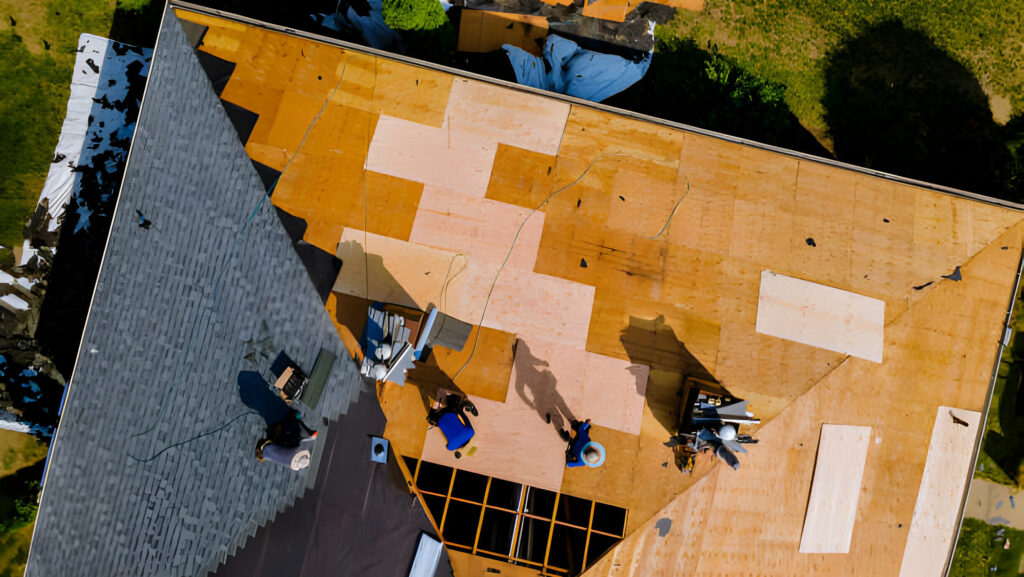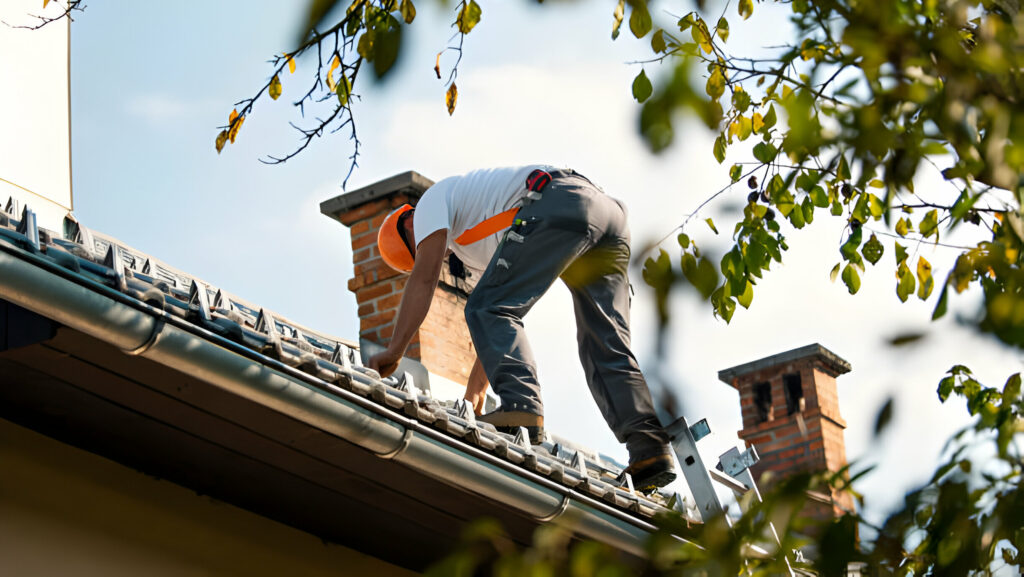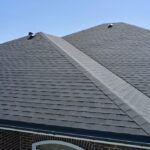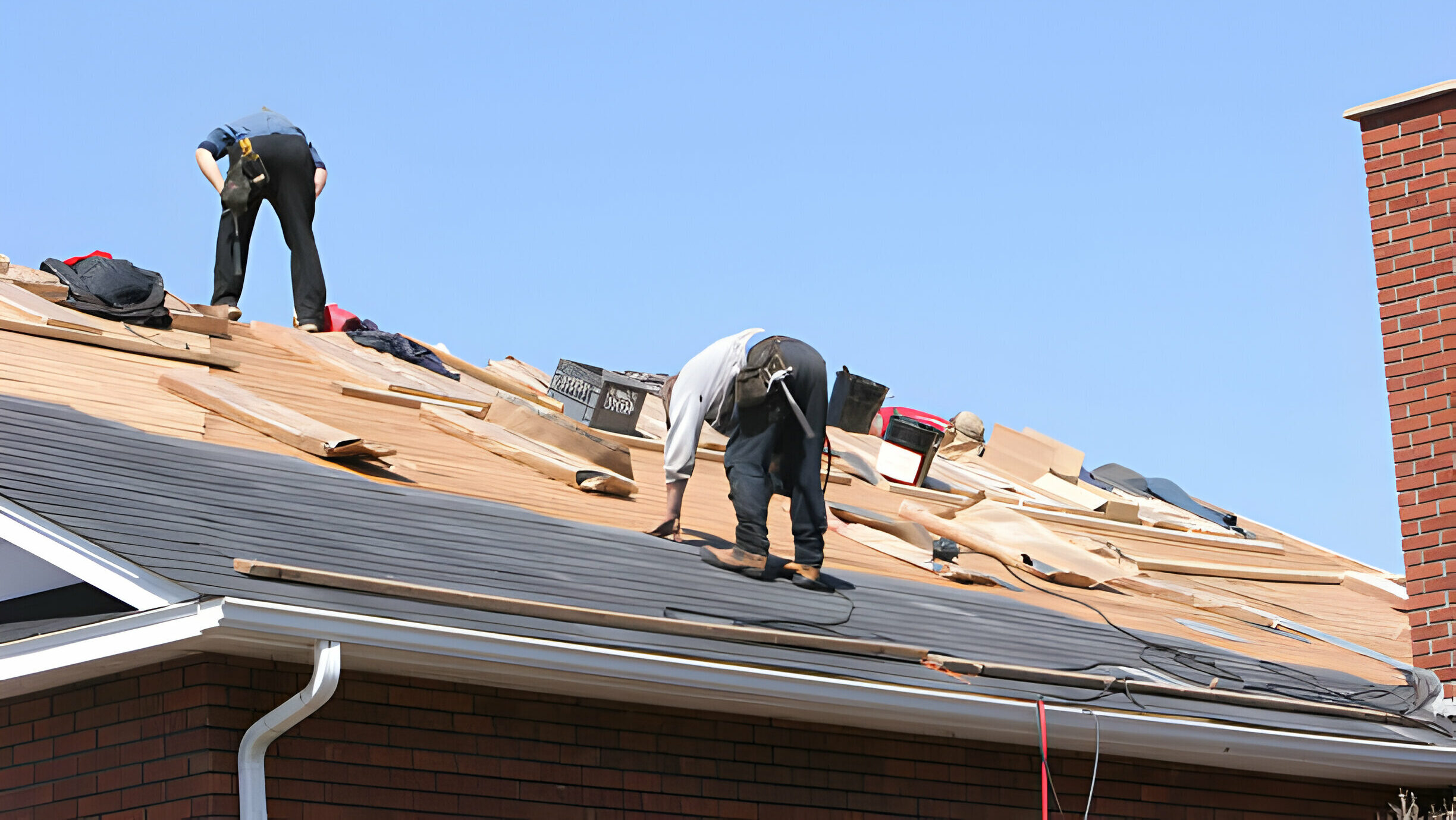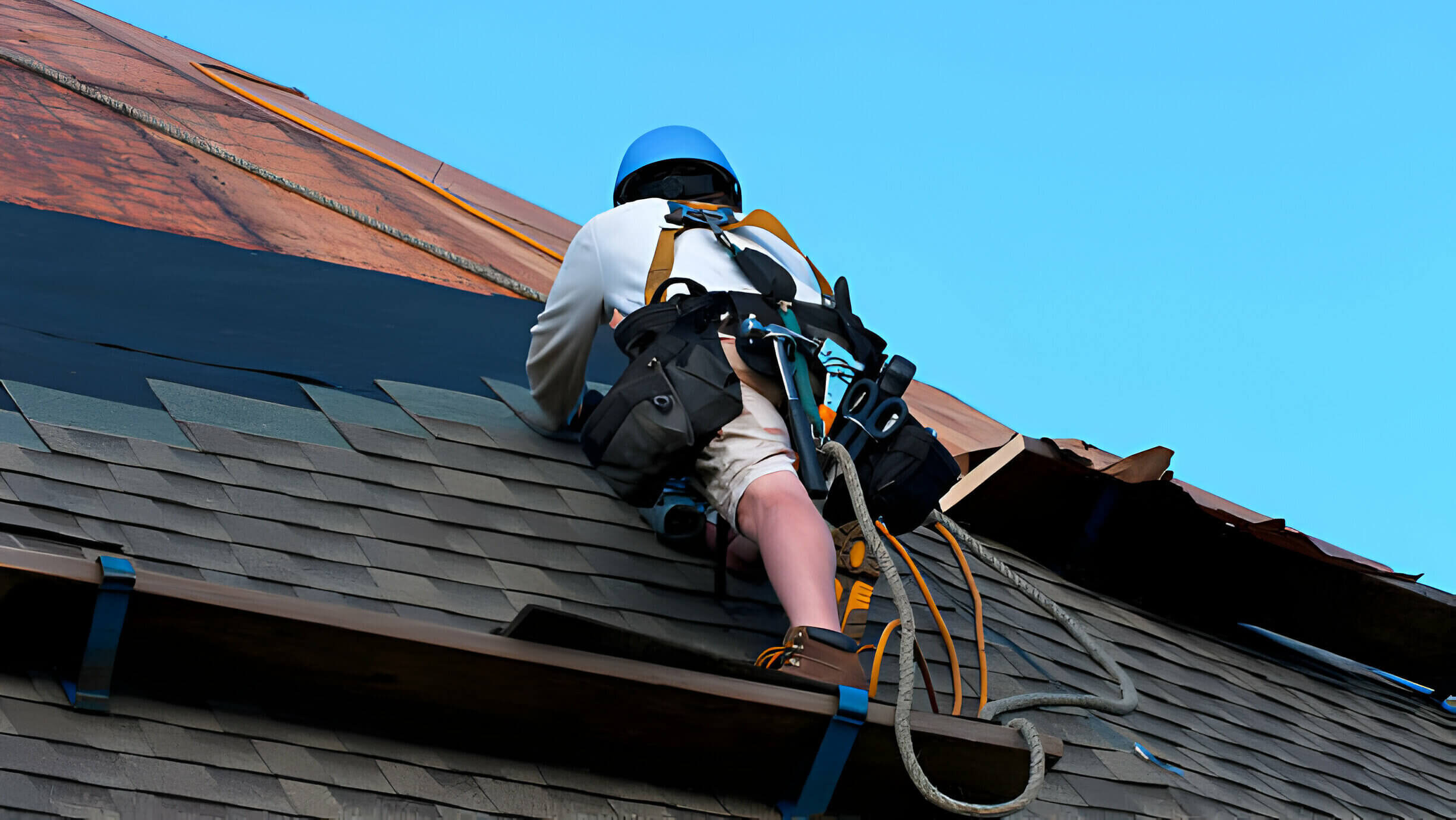Costly or cheap, of course, all roofs deteriorate over time, and while the lifespan of each roof is different, it still comes down to how often one should replace a roof.
Table of Contents
ToggleAn average roof can typically last 25-50 years, and that’s how often you should replace it. Depending on the durability and longevity, some roofs, like copper and tile roofs, can extend this time range.
Other factors like the condition of your roof can also determine when you need to change it; we will come to that soon.
In this article, we will look into the average lifespan of different roofing materials, when to replace your roof, and how you can extend the life of your roof for the better.
How Long Does A Roof Last?
The average lifespan of a roof ranges from 25-50 years, but to be more specific, the most common roof in the US is Asphalt shingles, so we are talking about 20-30 years on average here. Considering factors like rain on roof before shingles can also affect longevity.
The lifespan of a roof primarily depends on the roofing material type. You cannot just expect an Asphalt shingle roof to last as much as a slate one does.
The exact answer to how often your roof should be replaced lies in that.
Average Lifespans Of Different Roofs
The wide range in the lifespans of roofing systems is attributed to the diverse spectrum of available roofing materials.
Go through the table below:
| Roof Type | Time Span |
|---|---|
| Metal Roof | 40-70 years |
| Tin Roof | 50 years |
| Shingle Roof | 15-30 years |
| Thatched Roof | 15-30 years |
| Tile Roof | 50-100 years |
| Rubber Roof | 40-50 years |
| Concrete Roof | 30-60 years |
| Composite Roof | 40-50 years |
How Long Does A Metal Roof Last?
A typical metal roof can last between 40-70 years. Metal roofs are about twice as expensive as asphalt shingles, but that is understandable considering their energy efficiency and durability.
You can choose anything with different characteristics: aluminum, copper, zinc, or tin roofing. Steel roofs are the most commonly and widely used among the metal roofs family.
How Long Does A Tin Roof Last?
Tin roofs, originally known as “Tin-plates,” consisted of iron coated with tin and lasted 50-100 years.
Tin roofs are no longer as common as before because today’s metal roofing technology has steel and aluminum as their top metals.
Tin roofs have excellent fire-resisting properties and are long-lasting, so it’s worth it if you have your eyes on it.
How Long Does A Shingle Roof Last?
The average lifespan of a typical shingle roof is between 15-30 years. Shingle roofs come in 3 different types each with a different appearance and lifespan.
| Single Type | Lifespan |
|---|---|
| 3-Tab Shingles | 15-20 Years Maximum |
| Architectural Shingles | 22-25 Years |
| Luxury Shingles | Up to 30 Years |
How Long Does A Thatched Roof Last?
A thatched roof can last up to 30 years maximum with proper maintenance and without a natural disaster. When considering the cost of a new roof per square foot, the minimum lifespan of a thatched roof is 10-15 years, almost like that of 3-Tab shingles.

The real question is, “why would anyone want a thatched roof?”
Well, thatched roofs are very common, though not like before, but still wanted in many rural areas for their fair cost and energy efficiency.
Yes, thatched roofs are made of organic materials like dried grass or reeds that would keep your house cooler in the summers and the contrary in winter.
How Long Do Tiles Roof Last?
A tile roof can last up to 50 years or more. There are around 9 types of Tile roofs, including the two most popular, concrete and clay tiles.
A tile roof might be expensive but offers many advantages to compensate. They are extremely durable, weather resistant, fire resistant, and provide a sleek look; who wouldn’t want that?
How Long Does A Rubber Roof Last?
Rubber roofs are designed for flat or low-sloped roofs due to their extra waterproofing abilities. 40-50 years is the lifespan of a typical rubber roof.
Rubber roofs are made of plastic polymers and are very environmentally friendly and strong.
How Long Does Concrete Roof Last?
Concrete tiles, part of the tile roof family, can last up to 50 years. However, the main problem with concrete roofs is that the underlayment doesn’t last longer than 20 years.
That’s the case with all tile roofs, but do not let that stop you. Concrete roofs are durable and strong enough to expect around 50 years from them easily.
How Long Does A Composite Roof Last?
Composite shingles can last between 40 and 50 years. They can last longer than the normal Asphalt shingles because they are composed of a mixture of slate, wood, synthetic polymer, and laminate which gives it the extra durability.
How Do I Know When To Replace My Roof?
Let me take you through the obvious signs you might need to consider replacing your roof for.
1. Age Of The Roof
It might deteriorate if you notice your roof requiring frequent repairs for no obvious reasons, like heavy rains or storms.
And if that’s the case, no amount of repairs will fix that bad boy.The only thing you can do is replace your roof, considering the new shingle roof cost and the average time for roof replacement, and that’s for the good, right?
If your roof is still pretty new, you don’t necessarily need a replacement, but there might be some technical problems, like installation issues, that need to be addressed.
2. Sagging Roof
I want you to go out and look at your roof. Does it have that curvy appearance? Like not flat but curved, kind of?
That is probably a sagging roof, the major sign of an aging roof that screams “replacement.”
3. Water leaks
A few leaks in roofs are common over time, but if you have got multiple in yours, you need to replace it before the damage grows and reaches other parts of the house.
Water leaks can develop if any part of the roof is left exposed to weather elements like the rain or hail, it can soften the decking and cause a financial wreck.
4. Missing Or Cracked Shingles
If your roof has received massive damage from a falling tree and is now missing shingles up to at least 30%, you don’t have any other option to reflect on but replacement.
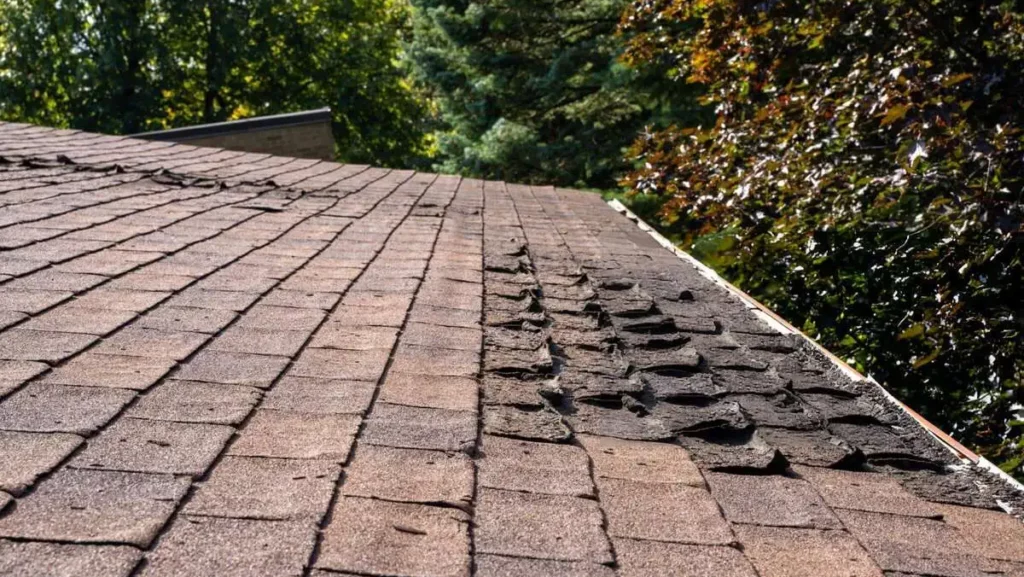
A few shingles, however, can be fixed with proper repair.
The same goes for cracks, too. Minor cracks in shingles are fine, but if they are large and many, potential leaks can develop, which is why replacement is important.
5. Rust Or Corrosion On Metal Roofing
Rust and corrosion can commonly indicate standing or slow-leaving water. In that case, the shingles can corrode, and you can notice rust on your roof.
Replacement is a good option to avoid further damage to the roof. Other options, like rust-free paints, can only provide a timely solution.
6. Pest Infestation
Pest infestations are common in shaded areas and can decrease a roof’s lifespan by up to 10 years. Years and increased chances of collapse.
What causes pest infestation in roofs? The moisture from elements can cause mildew overgrowth that is an invitation link to wood-destroying insects like termites.
These grow into colonies; the only way to stop them is to replace the roof before they invade your attic space!
How To Extend The Life Of Roofs?
While this whole “extending the life of a roof” is an out-of-hand process, here is what you can do at your level to ensure the durability of your roof.
- Cut any long trees in the surroundings that might be blocking the sun from reaching your roof.
- Make sure that the gutters are not blocked, and maintain routine cleaning.
- Make sure the attic insulation is fine enough to prevent the damage.
- Ensure that the roof ventilators are working okay.
- If any damage is received, address it immediately because leaving it to stay can lead to future problems.
What should you put on your roof to make it last longer?
Instead of a full replacement, why not just rejuvenate your existing shingles? Try out Roof Maxx spray as an affordable alternative to buy you a few years.
Factors That Affect The Lifespan Of A Roof
There are certain factors proportional to the lifespan of your roof that are important for every homeowner to understand.
Type Of Material
The types of roofing material you choose for your roof primarily decide how long your roof will last.
So, if you are after longevity and durability, there are many options among the roofing materials you can choose from in terms of extended lifespans.
You should go for metal roofing types instead of the everyday Asphalt shingles.
Expertise Of Contractor
Your expense and patience can only be worthwhile if you choose a third-class contractor for your roofing project.
If a material, no matter how good, is installed incorrectly in the first place, you will never get satisfactory results from it, and the lifespan will decrease significantly.

Therefore, referrals, quotes, and public reviews are important before deciding on a contractor.
Weather Condition
If you live in a region with moderate weather conditions, your roof can last longer than its average lifespan.
Adverse weather elements like heavy rains and hailstorms are kind of directly proportional to the lifespan of your roof.
This is why choosing a roofing material according to where you live is wo
When To Replace Roof FAQs
Can A Roof Last 60 Years?
Yes. Metal, slate, and tile roofs can surpass the 60-year mark with proper maintenance. These materials are like the long-distance runners of roofing, combining durability with a lifespan that can defy decades.
How Often Should A Flat Roof Be Replaced?
Flat roofs typically last between 15-30 years, depending on maintenance and material quality. Regular care can extend their life, much like regular servicing for a car.
What Is The Longest Lasting Roof?
The champion of longevity is the copper roof, with a lifespan ranging from 60 to 100 years. Its natural patina formation over time not only enhances its appearance but also fortifies its durability.
Conclusion
Timing is everything in the grand scheme of home maintenance, especially regarding your roof. How often should it get a makeover? Well, it’s about something other than marking your calendar for a roof replacement every few years.
Keep an eye on its condition, watch for signs of wear and tear, and always listen to professionals’ knowledge. Factors like material, climate, and how well you have played the maintenance game all matters.


